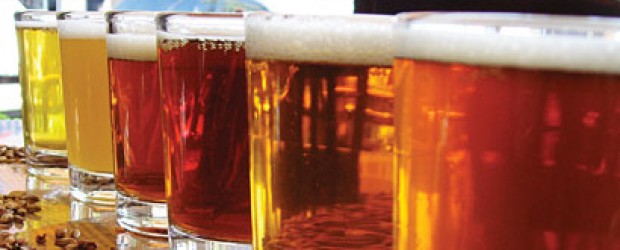It’s been nearly a year since I last brewed as best I can tell This is hard to believe. I could’ve sworn I brewed a beer in 2023 but who knows. Time flies when you have a family. In any event, I’m back for now. I bought a 55lb sack of pilsner from Morebeer along with several German base grains. A pound of Hallertau and a few different yeasts. I will be brewing at least 5 beers this year starting with this Hefeweizen.
I also bought a new malt mill from Morebeer. LA Homebrew closing has caused me to have to go back to milling my own again. I previously had the Jack Schmidt Maltmill. It still works, and is still heavy duty but never had a reasonable hopper. Rather than build one, I did the only reasonable thing, I bought a Barley Crusher mill with the 15 lb hopper. A much smaller mill but it got the job done really well.
The brew day went fairly well. I had to make a few modifications on the fly. The pre-boil volume and efficiency were coming in low, likely because I’m not in tune with the new mill yet. I supplemented with pilsner DME and modified the hopping time to ensure the bitterness came in right. Last thing you want is a bitter Hefeweizen. Currently cooling it down to 62F to pitch the starter I made.
I’ve been doing a mental toughness/discipline challenge known as the #75hard. It involves no alcohol for 75 days. I’m about 25 days out. So planning on having this guy done by then to celebrate finishing that. It’s also my wife’s favorite style of German beer. And this will be done for the September/October season when those beers are the thing. Really looking forward to it. And glad to be brewing again.
Update 8/19/2023
So fermentation went very well as best I can tell. Pitched after the wort sat in the tank for about 6 hours to let it get down to pitching temperature. Pitched the starter and it was rolling in less than 6 hours. The fermentation stayed pretty steady for about 5 days before starting to fall out of suspension. I’ve yet to take a final gravity reading as we’re at about 7 days. I am now doing something different, in addition to using the temperature controllers, I’m using wifi temperature/humidity sensors to monitor the temperature of my fermentation and kegerator at all times. I want multiple points of monitoring to ensure the temperature is accurate. Primarily because of carbonation issues in the past. The temperature to pressure ratio is important and can screw up flavor. But since they come in 2 packs, I’m also monitoring fermentation at all times. Hopefully the additional precision corrects mistakes I may not even know I’ve been making!
Update 8/20/2023
Fermentation is done. Final gravity is approximately 1.01. Original Gravity was 1.054. Banana esters and clove are fairly well balanced. I think this will be an excellent beer. Going to keg it today/tomorrow and setup a separate CO2 regulator from my standard manifold so I can maintain a high CO2 with this guy. It makes all the difference in these beers.
Update 9/2/2023
My wife is drinking this beer. She says it’s good but in a way that’s not impressive. I can’t taste it yet as I have another week on my alcohol fast I’ve been on for near 70 days. It smells fantastic. Clove, banana and bubblegum are all there for me. It’s carbonated appropriately. She’s telling me the clove flavor is harsh and unexpected. The Hefeweizen she typically likes apparently is less clove. I suppose I’ll know more next week when I can try it. I did however find a great article on Weizen beers that I wanted to post here for future reference. I suspect the clove phenols will reduce with a little age.
Recipe Details
| Batch Size |
Boil Time |
IBU |
SRM |
Est. OG |
Est. FG |
ABV |
| 5.5 gal |
60 min |
10.6 IBUs |
3.5 SRM |
1.052 |
1.013 |
5.2 % |
Fermentables
| Name |
Amount |
% |
| Pilsner (Weyermann) |
7 lbs |
58.33 |
| Wheat Malt, Pale (Weyermann) |
5 lbs |
41.67 |
Hops
| Name |
Amount |
Time |
Use |
Form |
Alpha % |
| Hallertauer Mittelfrueh |
2 oz |
20 min |
Boil |
Pellet |
2.8 |
Yeast
| Name |
Lab |
Attenuation |
Temperature |
| Weihenstephan Weizen (3068) |
Wyeast Labs |
75% |
64°F - 75°F |
Mash
| Step |
Temperature |
Time |
| Mash In |
153°F |
60 min |
